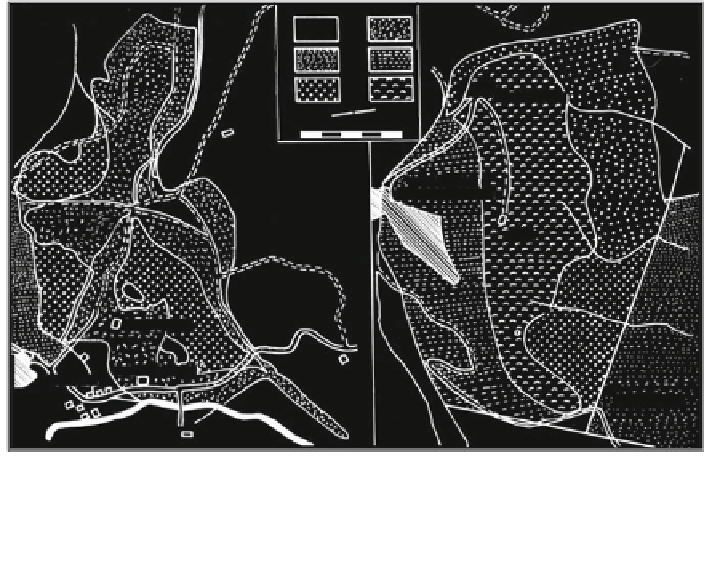Geology Reference
In-Depth Information
(a)
(b)
1
4
2
5
3
6
C.S.Michele
7
0
200m
Montecatini
di Val di Cecina
Sarci
I.Poggioni
L.Annuhziata
S. Anna
Orciaticp
Larsignano
Fig. 4.21 Geological sketch map of the Orciatico (a) and Montecatini val di Cecina (b) igneous
body, and surrounding rocks. 1 Pliocene and Quaternary sediments; 2 Miocene lacustrine and
marine sediments; 3 thermally metamorphosed rocks (
); 4 Orciatico orendite;
5 Montecatini val di Cecina igneous rock; 6 Montecatini val di Cecina igneous rock; 7 faults and
inferred faults (after Conticelli et al. 1992)
“
Termantite
”
The most primitive members of the ultrapostassic rocks are found at Tuscany.
The Orciatico lavas have high
87
Sr/
86
Sr and low
143
Nd/
144
Nd isotopic ratios as well
as very high incompatible elements. It suggests that the mantle source compositions
were depleted in the basaltic components at
first, but after sometimes, the enrich-
ment of the LILE components took place. Gallo et al. (1984) described Quaternary
volcanic centre at San Venanzo in the Perubia Povince and Cupaellow in the Rieti
Province. These centres are located about 50
60 km east of the volcanic center of
Latill Province. These are predominantly katungite and mafurite lavas. The rocks
are very similar in geochemistry to the Toro-Ankole province in central and
equatorial Africa. These rocks are however, slightly lower in TiO
2
, Nb and Sr, often
including kalsilite and melilite.
-
4.8.4.2 Vulsini Complex
The Vulsini complex (2280 km
2
) constitutes the northernmost extension of the
Roman comagmatic region (Holm et al. 1982). The volcanic rocks of the Vulsinian
district include tuffs, ignimbrites, lava
flows and cinder cones. Although the tuffs
and ignimbrites dominate, the rocks are in general latitic, trachytic or phonolitic in
composition (Sparks 1975). This petrographic province is characterized by highly
potassic rocks, and includes numerous volcanic complexes most of which have











Search WWH ::

Custom Search